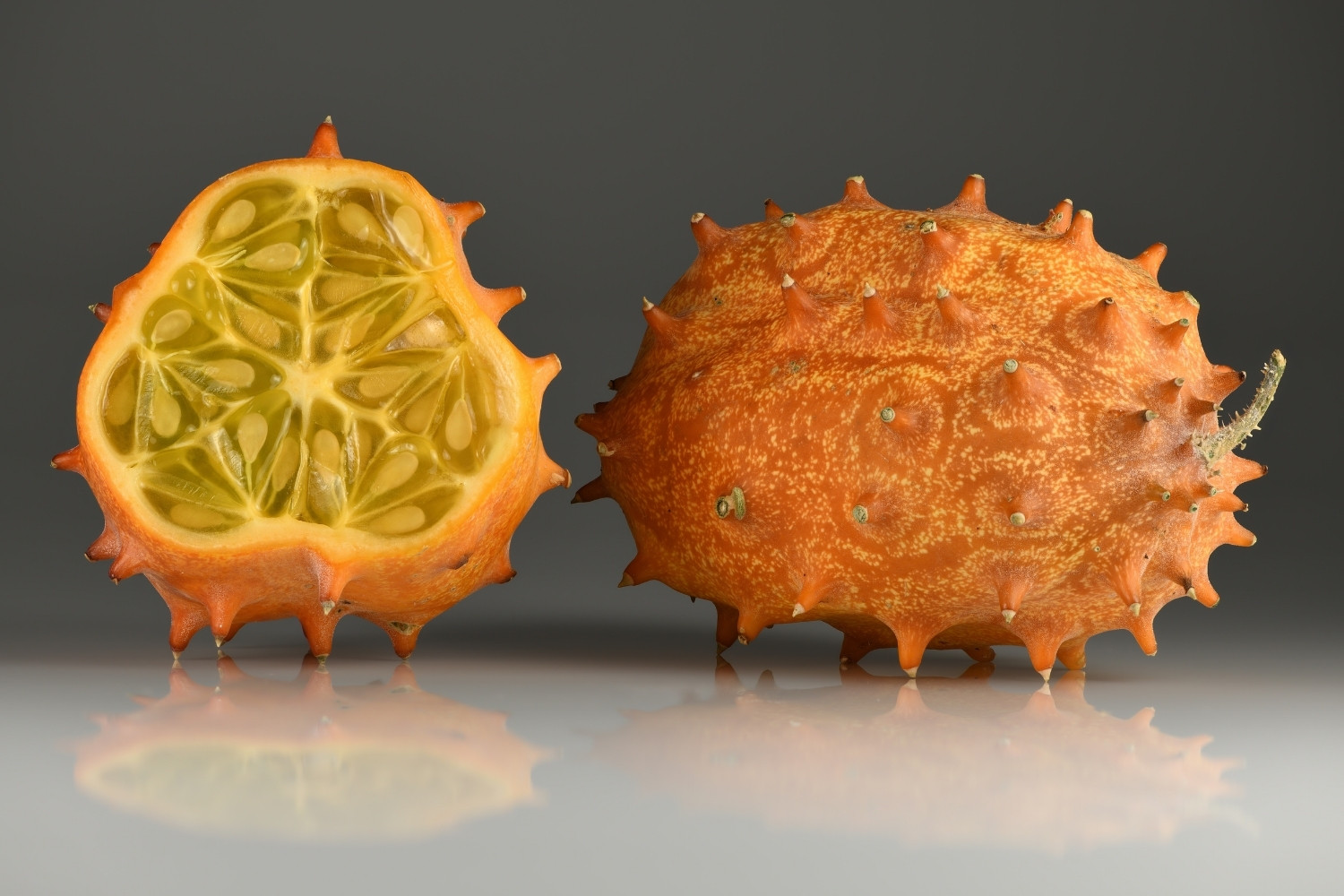
What is a Kiwano (horned melon)? This spiky, orange fruit might look like it belongs in a sci-fi movie, but it's very real and packed with surprises. Kiwano, also known as horned melon, hails from Africa and has made its way into kitchens worldwide. Its vibrant, jelly-like green interior is not just eye-catching but also nutritious. Rich in vitamins A and C, this fruit offers a refreshing, slightly tart flavor that some say is a mix of banana, cucumber, and lime. Whether you eat it fresh, add it to salads, or use it in smoothies, kiwano is a versatile and exotic addition to your diet. Ready to learn more about this fascinating fruit? Let's dive into 25 intriguing facts about kiwano!
What is Kiwano?
Kiwano, also known as horned melon, is a unique fruit with a spiky orange exterior and a vibrant green interior. Native to Africa, it has gained popularity worldwide for its unusual appearance and refreshing taste.
-
Kiwano is native to Africa. This fruit originally comes from the Kalahari Desert in Africa, where it has been consumed for centuries.
-
It is also called horned melon. The spiky, horn-like projections on its skin give it this distinctive name.
-
Kiwano is part of the cucumber family. It belongs to the Cucurbitaceae family, which includes cucumbers, melons, and squash.
-
The inside is bright green. When you cut open a kiwano, you'll find a jelly-like, bright green flesh filled with seeds.
Nutritional Benefits of Kiwano
Kiwano isn't just unique in appearance; it also packs a nutritional punch. Here are some health benefits you might not know about.
-
Rich in vitamin C. Kiwano provides a good amount of vitamin C, which is essential for a healthy immune system.
-
Contains vitamin A. This fruit is a source of vitamin A, important for vision and skin health.
-
Low in calories. With only about 44 calories per 100 grams, kiwano is a low-calorie snack option.
-
High in antioxidants. The antioxidants in kiwano help combat free radicals in the body, reducing oxidative stress.
How to Eat Kiwano
Eating kiwano can be a fun experience due to its unique texture and flavor. Here are some tips on how to enjoy it.
-
Eat it raw. Simply cut the fruit in half and scoop out the flesh with a spoon.
-
Add to salads. The green flesh adds a refreshing twist to fruit and vegetable salads.
-
Blend into smoothies. Kiwano's juicy interior blends well into smoothies, adding a tropical flavor.
-
Use as a garnish. The vibrant color and unique texture make it a great garnish for desserts and drinks.
Interesting Facts About Kiwano
Beyond its nutritional benefits and culinary uses, kiwano has some fascinating aspects worth knowing.
-
It can survive harsh conditions. Kiwano is drought-resistant and can thrive in arid environments.
-
Used in traditional medicine. In Africa, kiwano has been used in traditional medicine for its purported health benefits.
-
Grows on a vine. The fruit grows on a vine that can reach up to 10 feet in length.
-
Pollinated by insects. Bees and other insects play a crucial role in pollinating kiwano flowers.
Kiwano in Popular Culture
Kiwano has made its way into various aspects of popular culture, from TV shows to literature.
-
Featured in TV shows. Kiwano has appeared in cooking shows and competitions, showcasing its unique look and taste.
-
Used in exotic fruit baskets. Its striking appearance makes it a popular choice for exotic fruit baskets and displays.
-
Mentioned in literature. Some novels and stories reference kiwano, adding an exotic element to their narratives.
-
Appears in art. Artists have used kiwano as inspiration for paintings and sculptures due to its unusual shape and color.
Growing Kiwano
Interested in growing your own kiwano? Here are some tips to get you started.
-
Plant in warm climates. Kiwano thrives in warm, sunny environments with well-drained soil.
-
Water regularly. While drought-resistant, regular watering helps produce the best fruit.
-
Provide support. The vine needs support to grow, so consider using a trellis or fence.
-
Harvest when orange. Kiwano is ready to harvest when its skin turns a bright orange color.
-
Store at room temperature. Once harvested, store kiwano at room temperature to keep it fresh.
The Final Slice
Kiwano, or horned melon, isn't just a funky-looking fruit. It's packed with nutrients like vitamin C, iron, and magnesium, making it a healthy addition to your diet. Its unique taste, a mix of banana, cucumber, and lime, can jazz up salads, smoothies, or even desserts. Plus, its antioxidant properties help fight off free radicals, keeping your body in tip-top shape.
Growing kiwano is pretty straightforward, too. With the right conditions, you can cultivate this exotic fruit in your backyard. Its vibrant orange skin and spiky appearance make it a conversation starter at any gathering.
So, next time you're at the grocery store, grab a kiwano. Give it a try. You might just find your new favorite fruit. Whether you're into health benefits or just love trying new things, kiwano's got something for everyone.
Was this page helpful?
Our commitment to delivering trustworthy and engaging content is at the heart of what we do. Each fact on our site is contributed by real users like you, bringing a wealth of diverse insights and information. To ensure the highest standards of accuracy and reliability, our dedicated editors meticulously review each submission. This process guarantees that the facts we share are not only fascinating but also credible. Trust in our commitment to quality and authenticity as you explore and learn with us.
